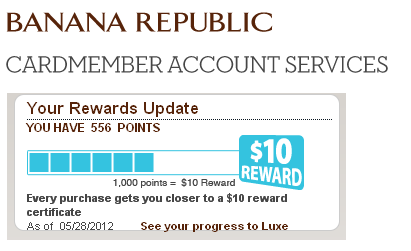Read This Blog, Win A Prize!!!
It’s the latest craze sweeping the nation… No, I’m not talking about Fruit Ninja, I’m talking about gamification.
There's a reason "gamification" is the buzzword on the tip of so many tongues these days. It takes ideas and structures from games – the video kind and other types – to guide companies in their quest to affect consumer behavior. So should digital strategists at banks and financial institutions use gamification to meet their business objectives?
We’ll get to that, but for now let's start by clarifying what we're talking about. Forrester defines gamification as:
The insertion of game dynamics and mechanics into non-game activities to drive a desired behavior.
These mechanics come in many shapes & sizes – SCVNGR, a mobile game developer, has a list of more than 40 – but here’s a quick list of four major ones:
· Points. The most basic element of gamification, points is any type of virtual currency – or, in a few cases, IRL currency. Digital strategists at banks & credit card companies have used this tool for years in the form of rewards points.
· Achievements. Achievements are immediate and obvious responses to preferred actions. In video games, achievements signal attainment of a goal. Companies like Condé Nast have successfully used achievements in their gamification efforts.
· Progression. Keeping users up to speed on their progress toward key goals can be one of the most compelling mechanics in gamification. Just a few days ago, I came across a card issuer – Banana Republic, the retailer – using a progress bar to illustrate the cardholder’s march toward a monetary target – in this case a $10 reward (see screenshot at the bottom of this post).
· Competition. Competition gives users the ability to compare their progression with that of others — including people they know and people they don't. Leader boards and standings are common examples in video and social gaming, though these are relatively rare in financial services. Citi’s innovative tablet app includes peer comparisons within its personal financial management tools, but it is not part of a broader gamification effort.
Does it work? It certainly can. Gamification done right takes a behavior-focused approach to driving digital engagement. For example, USA Network – an American TV network – partnered with the gamification firm Bunchball to engage and reward fans of one of its TV shows. The effort resulted in tens of thousands of newly registered users, a 130% boost in page views, and a doubling of revenue for the program’s online store.
The truth is, eBusiness leaders and digital strategists at financial services firms are already using gamification techniques, if somewhat unknowingly, every time they design a task flow with a progress bar, or tweak the “rewards” on a product.
Yet few are making a dedicated effort to use all – or even many – of the mechanics and concepts in the gamification toolkit. Back in 2007, Chase used gamification mechanics in its "We'll pick up the tab" promotion, and more recently Texas-based Extraco Banks rolled out its Bonus Banking game. American Express is incorporating gamification across many initiatives: from the communal pooling and sharing of rewards points, to rewarding cardholders with Farmville “cash.” Other efforts include Michigan credit unions’ “Save to Win” prize-linked savings account product, and Payoff.com, a firm that looks to incorporate gamification into banks’ PFM tools with “badges,” “communal discovery,” and other gamification mechanics. Mint.com is another example, using challenges, leaderboards, and other gamification mechanics to increase stickiness and digital engagement.
But these are exceptions.
We believe there is an opportunity to use gamification within digital financial services efforts: as part of a mobile merchant-funded rewards initiative, within a bank’s secure website, or as part of other banking interactions. But executives at providers should be careful and strategic. Think first and foremost about your audience and business objectives, and only then consider the potential value of using gamification mechanics.
If you feel gamification can help your digital strategy, take a look around: it’s very likely you have a pool of passionate, talented (usually young) employees and team members eager to help you experiment with gamification techniques.
Let us know what you think.
Oh, and for reading this you get 200* Peter Wannemacher Points!
*Earn 500 Peter Wannemacher Points and you get a high five; earn 1,000 for a signed picture. Subject to rules and regulations. Please email pwannemacher@forrester.com for details & redemptions.

Thanks to @shaw_smith2, @gamificationco, @usbanker, @NickKellet , & @kristinbedard for their suggestions, examples, and help.
